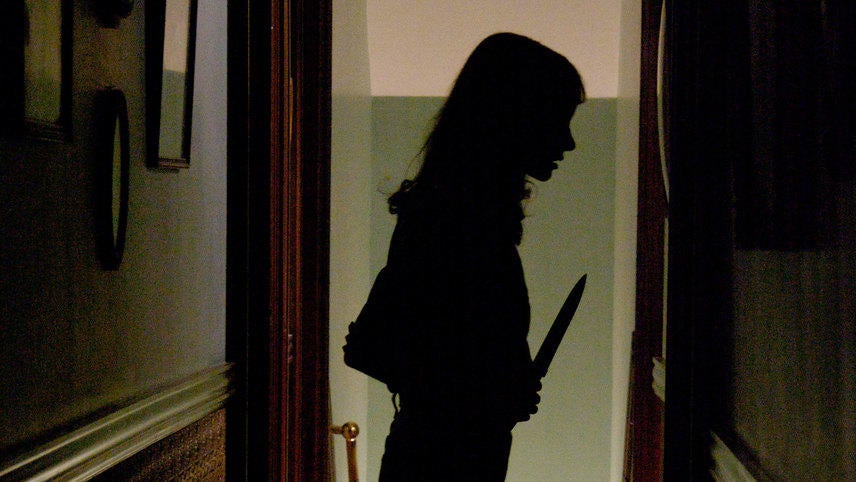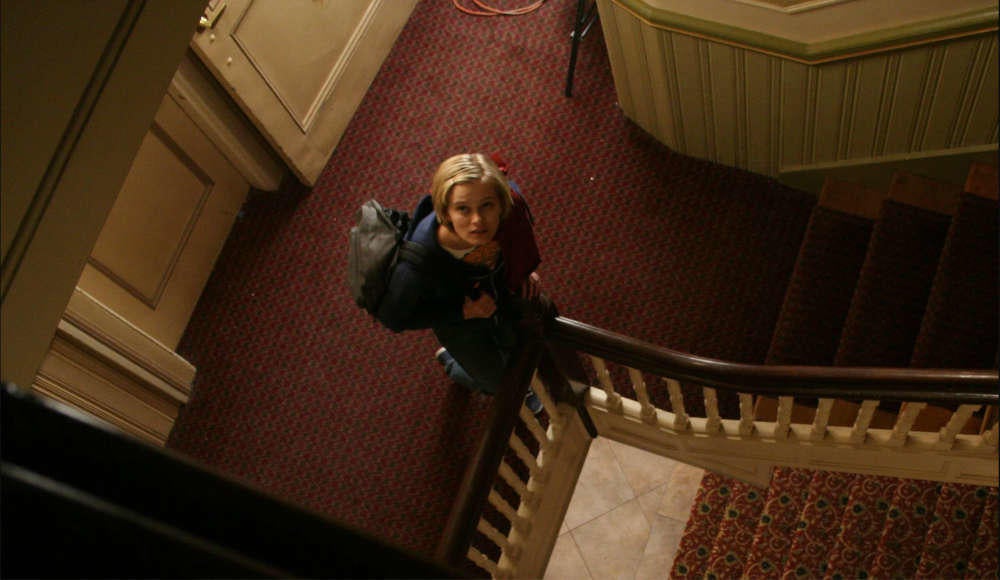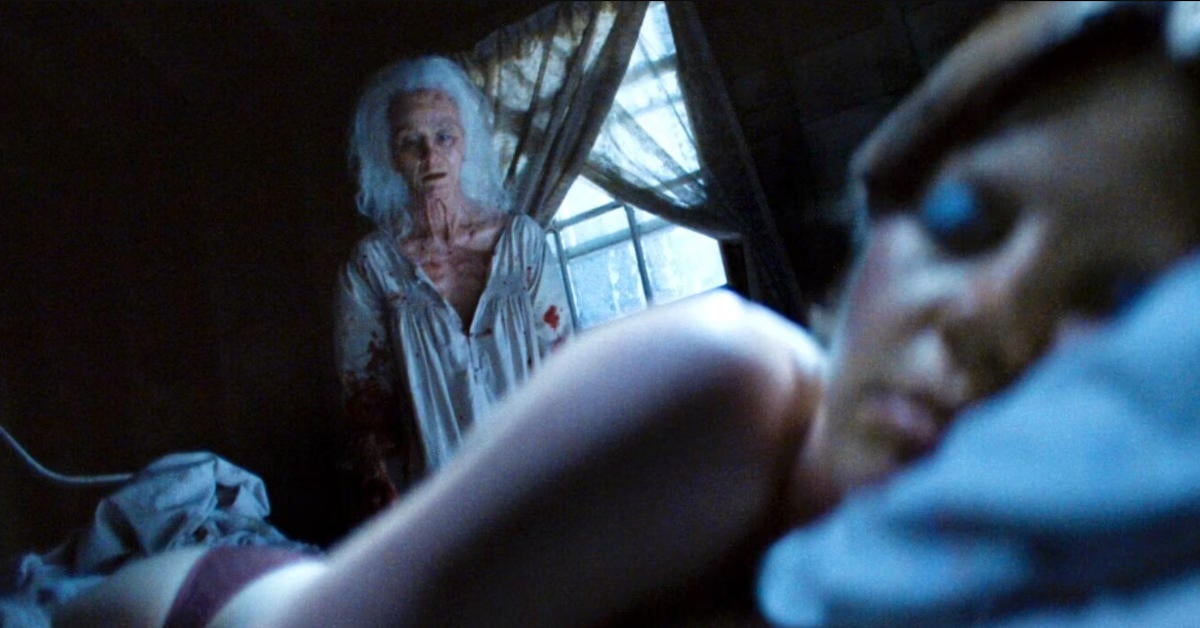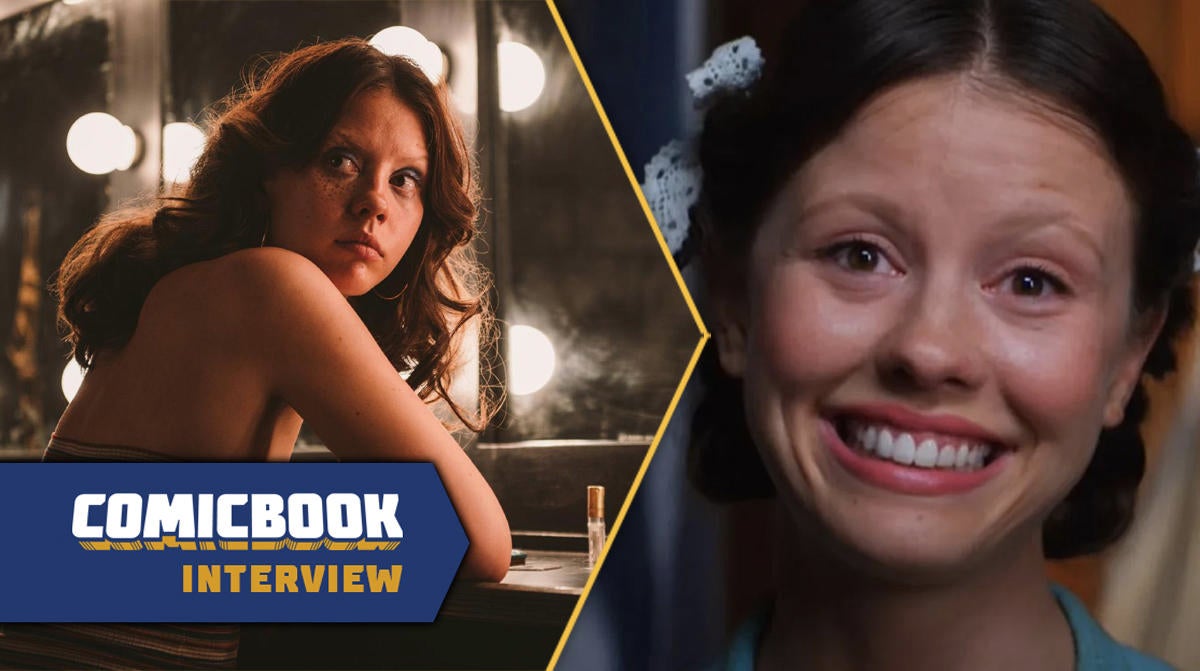Filmmaking Beginnings
ComicBook.com: Going back to the beginning of your career and some of those early credits, I know this is a nebulous, ambiguous question, but what do you think were your biggest influences that really made you want to get involved in filmmaking? Either a specific experience you had, a specific filmmaker, a specific group of films that were, “I’m going to step up and actually immerse myself in this world as a career,”?
Peter Phok: I think it was high school. I grew up in the ’90s and back then, access to movies was different, and so a lot of stuff on TV, when I was really young in New York, I think horror movies really scarred me because I saw The Blob. There’s a sequence in The Blob where the Blob’s attacking a bowling alley. I was literally set to go to a bowling alley with my dad and I was like, “Oh, no, no, no, the Blob’s there. I can’t go.” Just, the suspension of disbelief worked. I just was like, “No, I can’t go.”
So that and then I remember seeing Freddy [Krueger], I think images on HBO, and it would haunt me. And I was like, “Oh no.” I actually steered away from horror for a long time and I just didn’t have … It’s interesting what scares you, but you’ve got to face your fears. Sleepaway Camp was a movie I saw on a sleepover, that was — what an incredible movie that we probably were too young to watch at a sleepover. But we had our friend’s cool mom, who let us watch it. And then in high school, it was like we would go to movies, I’d watch everything. A lot of that is more studio fare than independent cinema.
But we had Blockbuster Video, we had Hollywood Video, and you’d go and you’d just be rummaging the shelves to try to find something cool. It’s all about the box art, you’re flipping it over, and I think it was all that. It was just having that community, that language of films, or talking about movies.
I think Wes Craven’s Scream came out and that I think just was like, “Woo.” It just blew me away, especially with Randy, who was already a cinephile in the movie. I love these characters. I don’t know, something about it just made me go, “Wow, that’s so cool.” I started to just research filmmaking itself and then convinced my parents, “Hey, I want to go to this film school.” There was a crash course and that exposed me to the business side of the practicality, because it’s, all right, there’s the art of script and movie making, but once I got my head wrapped around this business side, I was like, “Okay.”
Then it just became doubters, like, “Well, you still can’t do it. You’ve got to know somebody.” I didn’t know anybody and my family didn’t know anybody. But, I don’t know, I just grew up with this idea of opportunity in this country to just like, “Hey, if you set your mind to it, do it.” So it was, “All right, let’s just keep working towards it.” Film school brought me into a community of like-minded people and that’s where I met Ti and we were both like-minded. Ti exposed me to a lot more of the earlier, independent movies of genre, and that just really solidified you could make something and it didn’t have to be perfect, but there’s an audience for it and that was always so fun.
Well, I would like to say that I think everybody, no matter how old you are, is still too young to watch Sleepaway Camp. No matter how old you are, nothing can quite prepare you for that movie.
Home Video Evolution
It’s interesting because you mentioned browsing video stores when you are younger and you’re browsing video stores, there’s no agenda from the video store to say, “Here, this is what you should watch.” You really do get to make all of these discoveries, and I know that there’s some nostalgic, rose-colored glasses looking back at Blockbusters, specifically, but video stores in general, I think that’s a relic that we can all look back fondly on.
As a filmmaker who is working outside of the studio system, how do you feel about streaming? How if it isn’t on Netflix, people don’t seem to care about it. If you can’t say, “Hey, have you seen X?” “Oh, is it on Netflix?” “It’s not.” “Okay, well then I’m not going to see it.” How do you feel about that as a filmmaker?
That’s really interesting. Obviously, Netflix is such a prominent space as a streamer. I think everyone has different viewing habits and I still love going to the theaters and I’m so proud be a part of X and Pearl and have A24 release it wide across the country. That was a dream. And when I tell people, “No, it’s not on Netflix, it’s in the movie theater, you can go.” They’re like, “Which one?” “Check it out. It’s incredible.” That shared experience of watching the movie with a group of strangers, it’s so special and, given the pandemic, we lost a little bit of that, but I think it’s coming back and I believe in it. I believe that there will be more movies that we’ll get to experience in the theaters together.
With the advent of streaming, I think that just gives filmmakers more opportunity, to be honest, and I think the awareness. I think within genre, everything is so well-watched that I think the community spreads the word. I think if their movie is talked about enough, people will find a way to go see it, whether it’s on Netflix or a different streamer like Shudder, Hulu. And now there’s the advent of also AVOD, these other platforms like Pluto and Mubi that are giving … And because I’m thinking, “Wow. If I was a young person growing up in this era, AVOD is the new linear television where you could just watch and the library is pretty vast.” I was very surprised to see what’s on there.
I think we really rely on word of mouth and I think when I look at new projects, I come from a very filmmaker-driven place. My time working with Larry Fessenden and his company, Glass Eye Pix, he was always about supporting the artist and their vision and what they’re trying to put out there and justification for it. I think if you really lean into that, it’s in the movie, it’s embedded in the movie, and when the movie gets out there, audiences respond to that. Then when you like something, you just share, and I think that’s the way it’s getting out.
The other difference, too, is that we’re no longer also … While there’s always going to be that initial burst of excitement on a release date, I think movies are now being discovered. I think that discovery is also really fun. And we’re in a social media world where you can connect with people readily and much easier. It’s really fun to get a message from someone who’s just discovered a movie that I’ve been a part of. And it’s like, “Well, all that effort that it took to put that movie out there was worth it.”
I can only imagine the relief and joy and delight not only of you, but also your family, that when you’re saying, “I worked on this movie called X, you can go to a theater and see it,” as opposed to The Innkeepers or The Sacrament being like, “Well, if you drive 45 minutes to this one theater, it’s playing it twice this weekend,” and people are like, “I’m not going to do that.”
Yeah, most definitely.

Long-Lasting Collaboration
Going back to those earlier collaborations with Ti, when you first met him, first started working with him and collaborating with him, what was it about him as a filmmaker that really struck you as, “Not only is this guy a friend, but he is going to be doing things differently,” that really excited you?
When I met Ti at [the School of Visual Arts], we met late at night in the editing rooms just working. We were both just toiling away and it’s we were there at film school, so it was exciting. Then you just get to see what another collaborator’s doing, and we had other big classes.
His movie knowledge was very impressive. He was super well-watched and continues to be, but then also his attention to detail, very specific, and he is so sharp. When we would collaborate, I’d be helping him on his films and even now, he has such a vision for what he’s trying to make, very open to ideas, and will adjust, but at the same time, that specificity, which you want in a director. When we’re setting out to, “Hey, we’re looking for a vehicle.” “What kind?” and it’s very specific.
We’ve been making a lot of films that aren’t necessarily contemporary, they’re always set in an era. And so with that, you get to lean in, and it’s always been so grounded because when we did House of the Devil, for example, while it’s set in the ’80s, people didn’t go out and just change all their furniture in their houses and redecorate. It’s just a carryover, and I think the production design on that movie, Jade Healy’s work, who went on to work with us multiple times, I think it’s that world-building. I think that attention to detail makes a difference. I think about the kitchen, I think about the pantry in that house and the amount of time we’d be in that house and stand on set being quiet — we were shooting that chronologically — but you can look at all the detail and you’re like, “Well, I hope the camera sees some of this.” But whatever it picks up, it picks up, and I think that it makes all the difference. It sells the world.
Haunting Experiences
Knowing that it went on to inspire The Innkeepers because some of the crew had some of their own spooky experiences filming The House of the Devil, did you personally have any supernatural encounters while filming?
I wish I could say, “Yes, at the Yankee Peddler Inn.” I think I was too busy trying to just get to the next day on that that I was like, “Oh, are you a ghost? I don’t have time for you. Was it Mary Madeline? Yeah, no.”
What an interesting time. We were filming the house in The House of the Devil out in Limerock, Connecticut and the Yankee Peddler was in Torrington. It’s about a 35-, 40-minute drive without traffic. It was the only hotel that was available where we could house everybody. So we’re all living there, working these crazy hours all night long, coming home at 6, 7 a.m. and we were a rowdy young crew.
It was fun to get that opportunity where Ti’s like, “Hey, I want to make this movie. I wrote the script. We’re just going back to the Peddler, so we better get the Peddler.” And then to call them up and say, “Hey, remember us? We’re coming back.” It was the shortest commute making Innkeepers, because it was wake up and go downstairs and we can get cameras up.
The story, a lot of people have kooky dreams. I definitely had my light bulbs explode multiple times. If you’re ever in Torrington, Connecticut, you’ve got to pop in there, maybe spend a night, room 323. And I would say that you’ll just see the architecture. It was just peculiar. It’s well-captured in Innkeepers. I think there’s something fun about these New England hotels that have the lore. But I think there’s a lot of ghost hunting that still happens there and I think maybe somebody will get lucky and capture it.
Yeah, it’s definitely a different vibe out in New England. I like that you’re saying, “I was too busy to see ghosts. It must be nice for all of you to have the downtime to have ghostly encounters while I’m hard at work.”

Double-Feature Double Duty
The pandemic is the big challenge of everything about making these movies, but pandemic aside, when you’re actually making X and when you’re making Pearl, you’re making this return to horror with Ti, what ended up being the biggest challenge of bringing these movies to life?
Certainly the pandemic had its challenges. The return to filmmaking with Ti, specifically, we did In a Valley of Violence, and it had been some time. Ti is incredibly seasoned and he talks about how he’s been shooting all this series work and they’re working at a very fast pace. He wanted to just bring that technical skill set into making X. And when we were setting out to make X, Pearl wasn’t a sure thing. It was an idea, a concept of, “Maybe we’ll make two movies.”
But it was great to fall back into our rhythms. The way that Ti and I communicate with each other, there’s a shorthand, a trust. I deal with a lot of post-production with him on these films and one of the biggest challenges is that he’s all the way in New Zealand, and I’m in L.A. We’re working with an L.A.-based editor, and because of the pandemic and the lockdowns here, I don’t meet the editor for almost a year in person and we’re probably less than 30 minutes away from each other, and Ti’s in New Zealand for over a year.
With every challenge, and this comes from when we had no resources, you just come up with a creative solution. You just work with the time differences of New Zealand being a day ahead, and I think it was always just trying to plan.
The biggest challenge that I faced was the fact that we made two movies concurrently, where one was basically into editorial post-production, the other one’s going into production, and balancing both. And then Ti is coming off of Pearl, jumping back into the X edit and then eventually picking up the Pearl edit. There was an initial plan to try to juggle half his day on one movie and half on the other. Then you’re like, “Yeah, it’s two different worlds, so let’s just focus, get it.” But it was great. I think just with a bit more resources than we had previously comes, I guess, different challenges there, too, of just still balancing. It’s just a bigger balancing act.
MaXXXine’s Surprises
What struck me so much about Pearl is we’ve seen technicolor movies before, not only the authentic ones from decades ago, but also revivals, but we’ve never really seen a horror movie in that space. We’ve not seen Psycho meets The Wizard of Oz. Then when it came to you and Ti collaborating with the upcoming MaXXXine being set in the ’80s, that’s going to feel a little bit more familiar to some audiences, just given that we’ve seen more horror movies set in the ’80s. What do you think is going to surprise audiences about MaXXXine?
I mean, I think if I really shared anything, it would ruin the surprise. So I think I have to keep it on the DL. But Ti will bring all his energy. He’s so dedicated to the craft, to the effort. I think the finishing of Pearl, he just [worked] seven days a week, just moving. That’s a true filmmaker at heart there, and so I think, to be honest, I don’t know the surprises yet either, because I think that’s part of the journey is finding that. It’s been a really great adventure over the last, I guess, 15 or so years that we’ve been at this.

Expanding Horror Worlds
I asked him a similar question, that House of the Devil or The Innkeepers, there’s so many movies that you’ve developed that are just full of potential follow-ups or sequels or connections or whatever. Has this experience of making X and then making Pearl inspired you, even if Ti might not particularly be interested, has it gotten the wheels turning in your head of like, “Oh wow, I really wish we could tell another Innkeepers story,” or something like that?
The possibility of sequels is always something that comes up, in general. I think when you’re making a movie, you’re like, “Oh, you take the story further.”
I think, ultimately, we’re so protective of these movies that it just feels, without Ti’s support on it, whether he is directing it or not, it just doesn’t feel like the right move, in a world that was crafted and so well-received that you just don’t want to touch it. I think what we would much rather do would be to spin into a long format series, original series, something like that, which is always a possibility. But Ti, it’s whatever he’s feeling. When he comes to me with a concept, his ability to just hype it up, it’s contagious and we all get very excited and that’s the fun and joy of working with him.
Universe Expansion
Maybe a slightly different question is that, given your work with Larry Fessenden and Graham Reznick on Until Dawn, do you think there’s a movie that you’ve worked on that could lend itself to that video game format? I don’t know if maybe House of the Devil necessarily would be appropriate, but is there a movie that you’ve done that you’re like, “Oh wow, what if we did a short video game in that style of Until Dawn?”
That would be awesome. I’d play it. I’m a big gamer. But yeah, Until Dawn‘s incredible. I think I always talk with Graham about his next directorial journey. And he’s busy writing, he’s in demand, he’s super talented. Because these video games, especially Until Dawn and then Supermassive’s most recent release, The Quarry, which is really fun and a very similar choose-your-own-outcome game. I think it’s, again, world-building, giving the user that opportunity to decide which direction [the story goes].
I think it’s fun because Ti’s creating his own cinematic universe with X, and we’ll see how far that goes. But I don’t know, maybe it’s certainly with Larry, if there was ever going to be something, I don’t know, some Glass Eye Pix [project] where all the movies, where you could play all the characters. Honestly, I don’t know if it would be a video game. I honestly think that, if anything, it would be more of Web 3.0, we’re in the Metaverse, and then the characters can all integrate. I think that’s where maybe the future’s headed, maybe not tomorrow, but I think we’re going to be there, where somehow we’re in the Metaverse and our characters are somehow interacting with each other.
Franchise Interests
Looking back to V/H/S and how now Ti’s getting to do stuff with A24, and Adam Wingard and Simon Barrett are doing Godzilla vs. Kong 2, if you want to know who the next crop of blockbuster filmmakers is going to be, look to the indie horror world of 10 years ago and that’s who it is.
Is there any inkling or passion on your part for getting into the world of a bigger IP or a bigger horror franchise or do you think you have enough insight into those worlds to know the creative control that you might be sacrificing if you have to get involved in a Nightmare on Elm Street or something like that and would rather stick with the freedom of the independent world?
I think it depends, that opportunity, what that looks like. I think if we were to … It’s all about the filmmaker, at the end of the day. I think what I do is in support of the filmmaker’s vision, and I think that’s in alignment with whoever is originating the IP.
What’s fun about original stuff where we’re creating the IP is that it is truly creative control. But a new spin on something that works, works. I really enjoyed what Dave Bruckner just did with Hellraiser, that was really fun, and a shout out to Josh and Sierra Russell and their effects, which are just incredible. They did our effects for Graham’s series for Shudder Deadwax.
I think what’s interesting to me is just that when we’re going back to a world, you’re bringing that world to a new audience ultimately. There will always be the audience that originally knew it, but it’s introducing it, and I think that is fun. I can’t think of any world off the top of my head that I’m like, “Oh, I’m ready to go back to it.” There’s just talk about bringing back some of Mario Bava’s work and revisiting that, and I think that’s exciting. But as long as the stories are still well-told and reaching audiences, I’m for it.
You can learn more about Phok’s projects at his official website. X is out now on Blu-ray, DVD, and Digital HD and Pearl hits Blu-ray and DVD on November 15th.
This interview has been edited for length and clarity. You can contact Patrick Cavanaugh directly on Twitter.
.
[ad_2]





